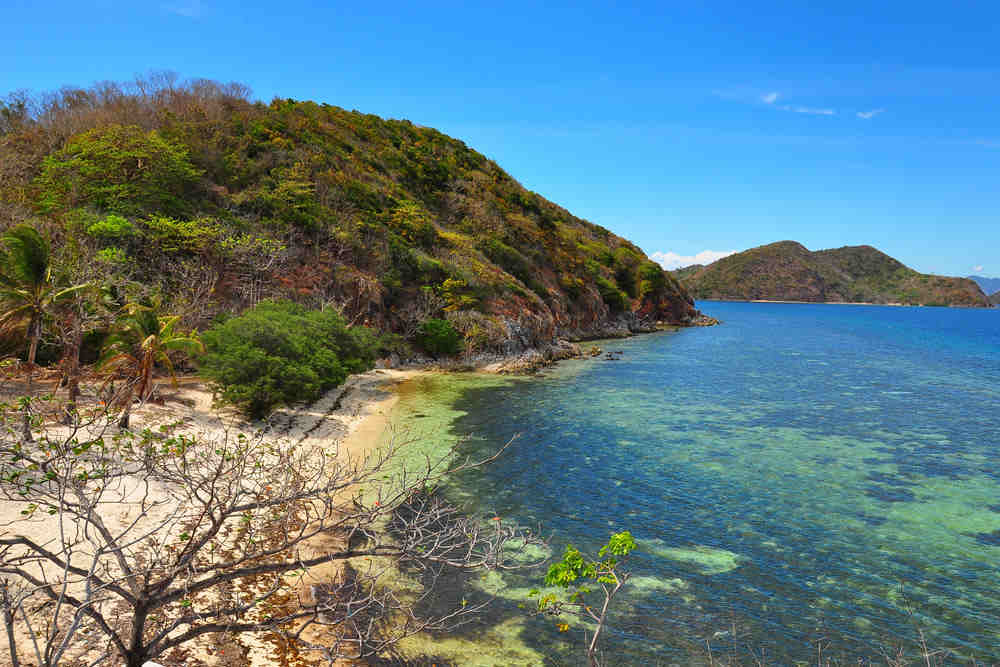MUST VISIT SPOTS IN CORON

1) Kayangan Lake
The iconic image of an enormous limestone amidst emerald and bluish waters that always pops up whenever you search for Coron in search engines, is near Kayangan Lake. Once the boat docks, visitors are greeted by teardrop-like limestone formations and waters as blue as the sky. Climb up the stairs to get a glimpse of the iconic image of Coron splashed on magazines, search engines, and postcards. The view is not the only draw of Kayangan Lake, the lake itself is just as beautiful as its vistas. Kayangan Lake is one of the cleanest lakes in the country, and is a mix of fresh and sea water which makes it unique. The emerald-bluish tinge of the lake is deceptively shallow – you can get a glimpse of the bottom – but once you dive in, the waters will swallow you whole.

2) Malcapuyan Island
Palawan does not run out of fine, white sand beaches and Malcapuya Island in Coron is one of them. The fine white sand on the island is perfect for a lazy day on the beach. Sink your feet into its powdery white sand and cool down in its turquoise waters.

3) Calauit Safari Park
A safari in the Philippines?!?!? Why yes, there is one in the Philippines! It is located in Calauit, Coron which means you won’t have to deal with the long layovers and expensive travel budget required to get to Africa. Walk in the wilderness and awaken your nature-loving self as you travel through Calauit Safari.

4) Twin Lagoon
The Twin Lagoon is one of the many beautiful lagoons in Coron. This masterpiece of nature has two lagoons, one where boats dock and another where tourists swim in. To get to the other lagoon, visitors need to either swim under an opening or climb up makeshift stairs and jump into the lagoon. The lagoons are embraced by towering limestone formations. The mix of warm and cold waters of the lagoon adds to its mystique.

5) Smith Beach
Although small in size, Smith Beach provides visitors with their own little piece of paradise in the middle of the ocean. The beach has soft, white sand that tickles your toes and azure waters as blue as the sky. Letting time fly by on this small island is the perfect way to eat lunch and share laughs with people on the tour, a group of friends, or bonding time with your family.


